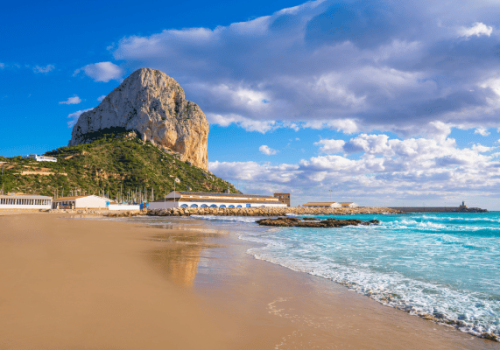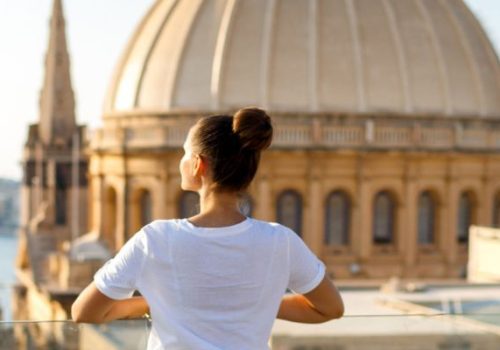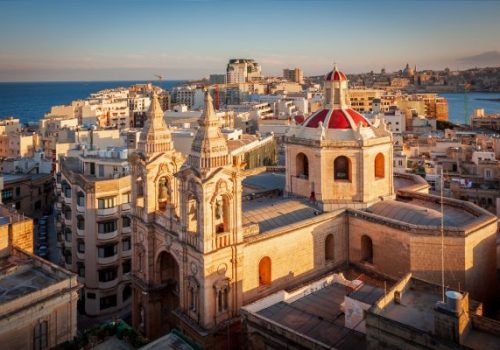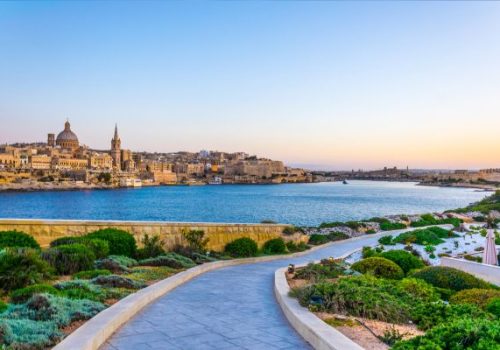Living and Working in Malta
Information & guidance about seasonal jobs in Malta
The Republic of Malta, or Repubblika ta’ Malta, is one of the European countries located in the middle of the Mediterranean, 93 kilometers south of Sicily. Malta is the largest island in the archipelago, with the other semi-large islands (Gozo and Comino) situated more than 6 km away. The country is popular for its wonderful Mediterranean climate, cozy villages, charming cafes, sun-kissed coastlines, hidden coves, and spectacular limestone cliffs.
However, life in Malta also offers a rich cultural experience with temples, historical buildings, and beautiful architecture. The island has attracted a growing number of international companies, leading to a diverse job market in Malta. Many people are drawn to Malta as it offers an affordable cost of living, making it a popular destination for expatriation. Read on to find out more about life and work in Malta.
Seasonal jobs in Malta
- Customer support
- Greece, Malta, Spain
- Customer support
- Malta
- Game Presenter, Online croupier
- Malta
- Game Presenter, Online croupier
- Malta
Working in Malta
Working Conditions
There are many job opportunities in Malta in fields such as IT, Sales, Marketing, and Customer Service (e.g., call centers). Additionally, there are often openings in areas like Pharma, Medicine, Law, and Finance. When working in Malta, you can expect a 40-hour workweek, with most islanders working from 08:00 to 17:00. Employees are entitled to 26 days of annual leave, and the country observes 14 public holidays.
Jobs in Malta
With the global job market expanding and companies expanding their operations to cities worldwide, there is no better time to apply for jobs abroad. If you are proficient in multiple languages, you will find it easy to secure a job in Malta. English is the second official language in Malta, and 90% of the population speaks it. Due to historical ties and proximity to Sicily, many residents also speak Italian. Therefore, multilingual talents are always welcome here.
Working on the island of Malta offers expats diverse career opportunities and a chance to fully experience the country. The island not only boasts beautiful weather but also a variety of interesting positions. For these reasons, many Germans, Austrians, and Swiss nationals live on the island. To connect with other international individuals outside of work in Malta, Facebook groups are a good option. In particular, two sectors offer great opportunities for expats to work abroad: Customer Service and Sales. Regardless of your work experience, you will find a position tailored to your skills so you can start your life in Malta!
Customer Service: Customer service roles often seek language talents to assist companies in customer support. As a customer service representative, you will communicate with customers via email, social media, and phone. You will receive coaching and extensive training beforehand, ensuring you can provide proper and accurate answers to customer inquiries. While working in Malta, you will primarily interact with German customers but communicate with your international colleagues in English.
Sales: There are also numerous sales jobs in Malta with a variety of tasks, depending on your level of experience. This means there are opportunities for every level of expertise. As with customer service positions, the salary varies based on location and the company you work for. Some companies even offer relocation packages for sales positions.
Many young people also opt for a Gap Year or Work & Travel experience in Malta for six months or more before starting their studies or training.
Working in Malta: Salary
Although Malta’s language, architecture, and local cuisine reflect a long history, the island is not lacking in modernity. In recent years, the Southern European microstate has experienced rapid economic growth, leading to the creation of many jobs in Malta. As a result, working conditions in Malta have also improved.
The legal minimum wage for a job in Malta is 736 euros per month. On average, people earn around 1600 euros gross per month. While the salary may be lower compared to Germany, Austria, or Switzerland, it is sufficient to live comfortably on the island, given that the cost of living is cheaper (with some exceptions for certain food items).
Working in Malta: Taxes
In Malta, individuals, couples, and parents pay income tax based on three tax rates. The progressive tax classes determine how much tax is deducted from the income. The current social security contribution rate is approximately 10% in addition to the income tax.
Individuals living on the island pay the following income tax rates:
- 0 euros – 9,100 euros: 0% with no deduction
- 9,101 euros – 14,500 euros: 15% with a deduction of 1,365 euros
- 14,501 euros – 19,500 euros: 25% with a deduction of 2,815 euros
- 14,501 euros – 60,000 euros: 25% with a deduction of 2,725 euros
- above 60,001 euros: 35% with a deduction of 8,725 euros
Since the 35% rate applies only to high earners, most people in Malta do not have to pay high income taxes. Although salaries on the island may not be as high, the cost of living and income tax balance it out, making it possible to live well in Malta with the average salaries mentioned.
Working in Malta as a German, Austrian, or Swiss
Germany is one of Malta’s most important economic and trade partners, which is why many German companies have established themselves there. Additionally, the island is home to numerous financial services companies and is one of the fastest-growing financial centers in Europe. There are also many production companies and technical service providers. As such, job hunting in Malta is relatively easy.
The gambling industry in Malta is one of the sectors with diverse job opportunities. The issuance of licenses for online casinos has created many new jobs in this sector. German speakers, especially those in customer service, are always in demand in this industry, where various career opportunities are available. Many open positions can be found here. Simply apply for a suitable job and embark on your overseas adventure!
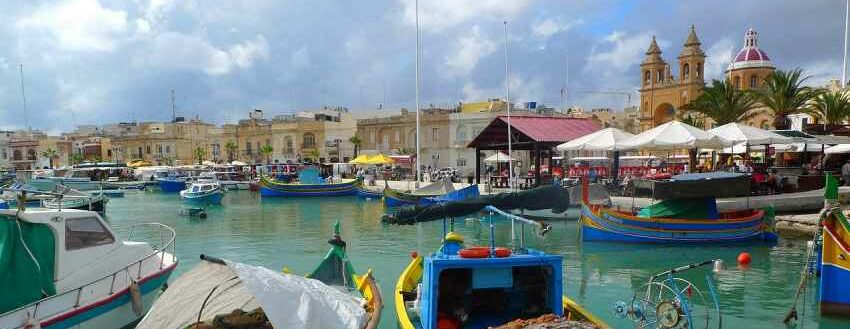
Living in Malta
Accommodation in Malta
When you decide to take up a holiday job abroad, you must also arrange for accommodation. It is often useful to first rent an Airbnb so that you have enough time to explore the city and find the neighbourhood that best suits your preferences and where you would like to live permanently.
Apartment rentals in Malta can vary significantly depending on the region. A one-bedroom apartment in the capital of Malta – Valletta – costs around 500 to 600 euros. A three-bedroom apartment slightly further outside may cost about the same. Areas like Sliema and St. Julians are very popular among expatriates and are well-suited for living in Malta. One reason is that they have a great nightlife reputation, but also because many companies have established themselves there. For a one or two-bedroom apartment, you can expect to pay around 500-800 euros per month.
In places like Gzira, Ta’ Xbiex, and Msida, many offices are located. Therefore, it is always practical to find an apartment nearby if you have secured a job in Malta. However, if you prefer to enjoy the nature of the paradise island, places like St. Paul’s Bay, Xemxija, and Mellieha are highly recommended. Outside the cities, apartments are even more affordable, and you can find an apartment for around 300 euros, for example.
Take a look at the following websites, and with some luck, you may already find your new home for your life in Malta:
- Accommodation in Malta – Apartments and Private Rooms
- Accommodation Malta – Share, Rent, Buy – Apartment, Flat, House, Room
- housing.justlanded.com
Malta public transport
Working in Malta also means that ideally you can get around using public transportation. Fortunately, the island has an extensive bus network. Since July 2015, the Talinja card has been available, a chip card for public transport, which makes each individual journey cheaper. A bus ticket costs €2 in summer and €1.50 in winter. Renting a car costs between €16 and €28 per day. Additionally, you can rent bicycles, cars, and boats to explore the island on your own. There are even water taxis – dgħajsa – which are also a good alternative for those who want to explore the country.
Food in Malta
Malta has a very diverse cuisine. Fresh fish is a staple, and the Maltese also love soups, with various hearty soups found on every menu. Rabbit is also a popular dish. However, breakfast is not such a big deal in Malta and is often skipped. In tourist areas, you pay about €15 for a meal. A typical Maltese dish is Pastizzi, a popular small puff pastry usually filled with ricotta. Tap water is safe to drink, although it may have a peculiar taste. A typical Maltese liqueur is the Fig Cactus Liqueur Bajtra, which is enjoyed with champagne or bitter lemon.
Culture in Malta
Of course, you are not just in Malta to work, but also to immerse yourself in the country’s culture. The island’s 7000-year history makes it very interesting for culture enthusiasts. The capital, Valletta, was even named the European Capital of Culture in 2018. Its historically significant past and location between Europe and Africa have made Malta a truly multicultural country. Over the millennia, a colorful blend of different cultures has fused together. The architecture of the buildings and the prehistoric temples on Malta are unique. The Grandmaster’s Palace is a masterpiece from the 16th century. The impressive “Sacra Infermeria” was formerly the hospital of the Knights Hospitaller.
The visual arts have always played a significant role in Maltese culture and life – and that has not changed to this day. The National Museum of Fine Arts – MUZA exhibits magnificent artworks from the early Renaissance to the modern era. Theater and music are also very popular in Malta. Several theaters, including the Manoel Theater in Valletta and the two opera houses in Victoria (Gozo), as well as various open-air stages, showcase plays, musicals, operas, and concerts.
Nightlife in Malta
In addition to sun, sea, beaches, and many attractions, life in Malta also offers a great nightlife. The nightlife is most vibrant in the town of St. Julians. In the area of Paceville, you will find many bars, cafes, pubs, and nightclubs. Before diving into the nightlife, you can enjoy a delicious meal at one of the many restaurants or take a stroll. The nightlife on the island is also quite affordable, which is a big advantage. You usually don’t have to pay an entrance fee for bars and nightclubs. Compared to other holiday destinations, the prices for alcoholic beverages are also quite low. Popular nightclubs in St. Julians include Empire, Axis, Havana Club, and Bamboo, all located on the bar street of St. Julians.
Nature and Landscape
Life in Malta has a lot to offer in terms of nature. The water is clean and deep blue, and the rock formations are very impressive. The landscape is also very barren and rocky (limestone) with little to no natural vegetation. Malta is characterized by its numerous bays along the coast. The islands around Malta also have special attractions. On the (almost) uninhabited island of Comino, you will find the Blue Lagoon, a beautiful lagoon with shallow, blue water, perfect for diving. Here, you will also find the most beautiful bays. The island itself has only a few beaches. The beaches in the northwest are often small and/or rocky.
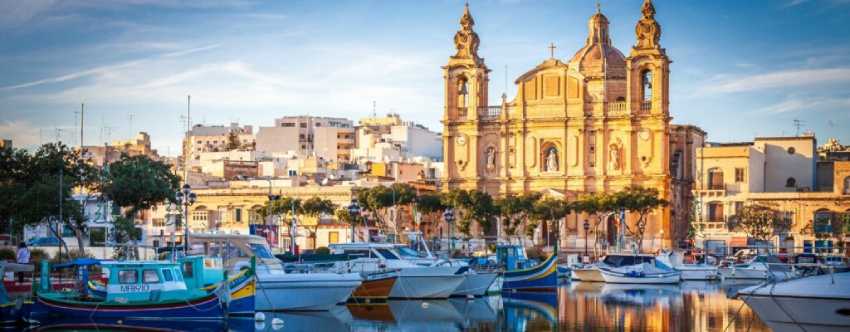
What not to miss in Malta
Valletta
The historic capital, Valletta, is an absolute highlight and has undergone significant development in the last 15 years. This is largely due to Malta’s accession to the EU. With a population of 7,000, it is one of the European capitals with the smallest population. Since then, many new buildings and facilities have been constructed, transforming Valletta into a modern city. Despite this, the city also boasts many treasures from the past, some of which are protected as monuments.
You can easily spend at least a day amusing yourself with a stroll through the city. If you enjoy museums, the National Museum of Fine Arts is worth a visit. A large part of the collection consists of religious objects. Also in Valletta, you’ll find the Grandmaster’s Palace, simply referred to as “The Palace.” Built in 1571, the palace features two courtyards, the Neptune Courtyard, and the Prinz-Alfred Courtyard.
Blue Lagoon
Situated between the islands of Malta and Gozo, the stunning Blue Lagoon is a must-visit on your trip to Malta. A day trip to this breathtaking lagoon is one of the most popular excursions on the island. The water is shallow and bright blue, turning turquoise as the sun’s rays reflect on the white sand at the bottom. The color resembles that of a swimming pool. Tourists visiting the Blue Lagoon typically spend a day swimming, snorkeling, and diving.
Blue Grotto
The Blue Grotto, not to be confused with the Blue Lagoon, is a group of seven caves on the south coast of Malta, opposite the small island of Filfla, and less than a kilometer west of Wied iż-Żurrieq.
Golden Bay Beach
Located next to Għajn Tuffieħa on Malta’s northwest coast, near the village of Manikata, Golden Bay is known for its red sand and naturally formed dunes on the surrounding slopes. Golden Bay is a popular beach, partly due to its proximity to the five-star hotel Radisson Golden Sands.
Gozo & Comino
Day trips are the perfect way to see and experience more of the world when you have limited time, and Malta is no exception! Malta’s sister islands, Comino and Gozo, are an absolute must on your itinerary through Malta due to their outstanding natural beauty and Mediterranean charm! Comino is Malta’s third-largest island and is home to the famous Blue Lagoon. Gozo, the second-largest island in the Maltese archipelago, is a charming place with rugged coastlines, green landscapes, and beautiful towns and villages!
Mdina
In the center of the island, you’ll find the city of Mdina. This city is fully walled and consists mainly of buildings from the Middle Ages and the Baroque period. With less than five hundred inhabitants, it’s practically car-free, making it very authentic and atmospheric. The best way to explore Mdina is on foot, passing by various churches, monasteries, houses, and palaces. Opposite Mdina lies the city of Rabat. It is slightly larger with over 14,000 inhabitants, but just as beautiful.
Gozo
Gozo offers everything that is hard to find in Malta: plenty of space and tranquility. If you enjoy hiking, be sure to take the ferry from Malta to Gozo. The landscape, protected beaches, and old fishing ports allow you to escape the hustle and bustle of daily life.
Ghajn Tuffieha Bay
Unfortunately, Malta doesn’t have many sandy beaches, and swimming often means taking a dip in a pool. However, there are three beaches in the northwest that are definitely worth a visit: Golden Bay, Gnejna Bay, and the crown jewel, the small sandy beach of Ghajn Tuffieha Bay. Keep in mind that you’ll need to walk about 6 to 10 minutes (partly via steep stairs). Because of this, it’s also a peaceful spot.
Marsaxlokk
This is a traditional fishing village and one of the most picturesque places in Malta. The traditional fishing boats (‘luzzu’) are also a source of inspiration for photographers. If you’re a seafood lover, there are many restaurants where you can indulge yourself.
Healthcare in Malta
Malta has a very good social insurance system to which both employees and employers contribute. As citizens of the European Union, for example, you will receive standard healthcare coverage, and women are entitled to 18 weeks of paid maternity leave (with 4 weeks unpaid). The healthcare services in Malta are well-equipped with modern hospitals and a supportive network of health centers.
Visa & Travel Insurance
You’ve decided to embark on the adventure of living and working in Malta? As a European citizen, you don’t need a visa or work permit for a job on the island. However, if you plan to stay longer than 3 months or 90 days, you’ll need to apply for an E-Residence Card as an EU citizen. This card will allow you to easily open a bank account, among other benefits. Malta provides a state-provided basic health insurance available to all residents.
Safety
When considering a job in Malta, your safety, of course, is important for your comfort. Malta has low crime rates and is considered one of the safest countries in the Mediterranean region. However, occasional pickpocketing incidents do occur among tourists, so it’s crucial to be cautious and keep an eye on your personal belongings. The main cause of crime is excessive alcohol consumption at night.
Cost of Living in Malta
If you’ve decided to work in Malta, the cost of living will naturally be a significant consideration. Living abroad can be more or less expensive depending on where you currently reside. What matters most is the cost of living in relation to your income. Before applying for a job on the island, it’s essential to have an idea of the average cost of living.
A one to two-bedroom apartment in a good location will likely cost around €600 – €700 per month. Renting a room in a shared apartment is usually cheaper. Malta offers many restaurants where you can enjoy great food for a reasonable price, and you can expect to spend around €15-€20 for a meal, including drinks. If you’re working in Malta, your healthcare will be covered through contributions to social insurance, which are automatically deducted from your salary. Every resident in Malta receives free medical treatments, with the costs covered by the social insurance.
As Malta is an island, many food items are imported from the European mainland. However, there’s a wide range of locally grown vegetables and fruits available at lower prices compared to imported goods. The amount you spend on food while living and working in Malta might be slightly higher than in other countries. It’s advisable to avoid shopping in tourist areas, as prices there are generally higher.

